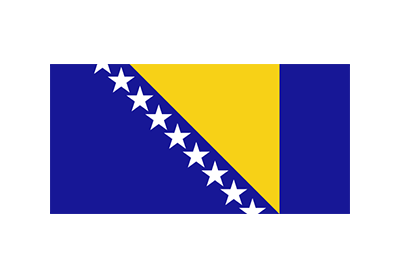
LINKS
Bosnia and Herzegovina
Local contact

Ibrahim Terzic
Vacant
What is the status of the primary PCI implementation in your country and the treatment of STEMI patients?
Bosnia and Herzegovina is still an underdeveloped country, where the standard of living remains still the lowest in Europe since the very recent war time. After the war, cardiovascular diseases became responsible for more than 50% of deaths (54% according to the Public Health Committee).
Interventional cardiology is a young discipline in clinical practice in Bosnia and Herzegovina.
We have 5 interventional cardiology centres in Bosnia doing more than 2500 interventional procedures and about 8000 diagnostic cardiology invasive procedures. There are only 18 independent trained interventional cardiologists in the country, although some young interventional cardiologists are currently finishing their training.
For the SFL survey, we have recently conducted a study about myocardial infarction treatment in Bosnia and Herzegovina in 2011. We have found that more than 42% of patients, with acute myocardial infarction (MI) with ST elevation (STEMI), remain unreperfused and are treated conservatively with a high mortality rate (no data, but estimation is about 12-15%). Only 15% (126 per million) patients with STEMI, are treated as the ESC guidelines requires, by primary PCI. But there is no systematic transport bringing patients to the PCI hospital. Most of the time, patients come by their own transportation means and not by EMS.
What are the key barriers to the implementation of primary PCI in your country?
The main barriers are:
- Late recognition of symptoms and big patient delay, late coming to the medical system (EMS or hospitals).
- Late ECG recording. Sometimes unrecognised early symptoms without typical ECG changes in the initial phase and some hospitals refuse to admit patients with MI.
- More than 30% of myocardial infarction, especially STEMI still remained unrecognised.
- No specific strategy about reperfusion therapy.
- No systematic transportation to PCI centres (or transportation to non PCI hospitals with fibrinoliysis capabilities).
- All these facts together lead to high mortality rate from MI (more than 10%).
Sometimes patients arrive on the second day (or even later in the late phase of MI) with generally big expectations and they put pressure on interventional cardiologists. Unfortunately, generally some non PCI hospitals don’t like to send patients to PCI centres, keeping reimbursement for them and trying to keep patients for a follow-up.
What are your plans/ actions planned to cross these barriers?
To solve some of these problems, we need to increase public awareness to recognise symptoms early on and act quickly by calling a unique emergency phone number (to reach an organized emergency medical service of transport to the nearest PCI). We need to start with public campaign about the MI problems and teach potential patients how to recognise the symptoms and the importance of receiving treatment as soon as possible by entering quickly in the medical system.
We need a political support of the government to create this national platform and to establish a national Registry for ACS – PCI patients. We have to establish a regional network composed of EMS, regional non PCI hospitals and PCI hospitals. This network will allow us to have primary PCI access for at least 70% of STEMI patients as suggested in the ESC guidelines.
Becoming a Stent for Life affiliate country will give us the capacity to increase pressure on government in order to have support on different topics: funding for the hospitals, fee for unmotivated PCI team members, interventional cardiologists and technicians.
We have to increase the education of young cardiologists to become independent interventional cardiologists and facilitate the primary PCI implementation program.
We have to define an efficient organisation of the PCI centres in order to allow access to primary PCI 24/7 and to be ready to admit and treat MI patients according to the guidelines 24 hours per day.
Be part of the Stent for Life Initiative will give us the great opportunity to use and share experience from the other Stent for Life countries who already raised many outstanding achievements. We definitely hope to develop a regional network in the treatment STEMI patients in our country in the near future 2012-2013 and reach following objectives:
- 70% STEMIs to be treated by primary PCI
- 600 STEMI per million treated by primary PCI
- 100% STEMIs to access invasive approach-coronarography eventually PCI in 24 hours.
Ibrahim Terzic,MD,FESC
Stent for Life Initiative Bosnia and Herzegovina Champion






